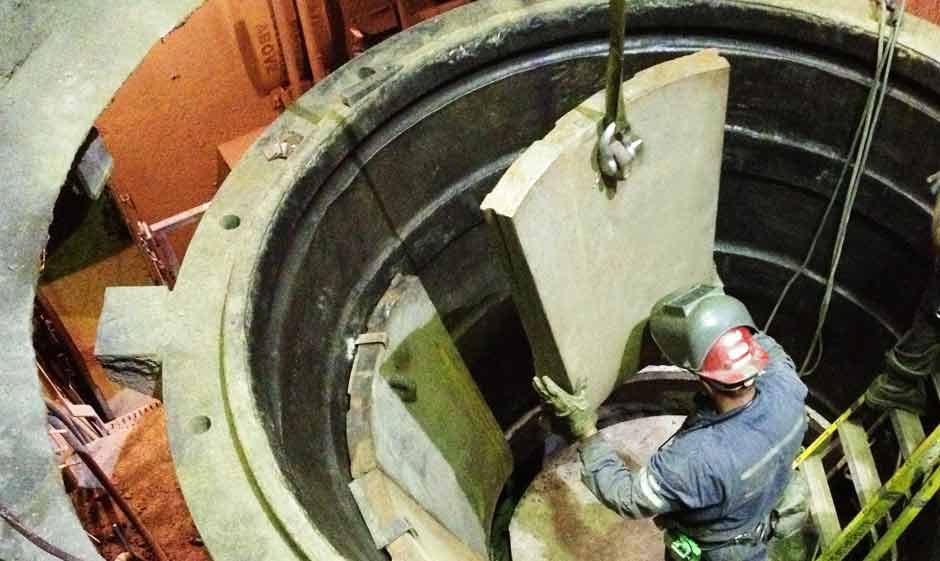Gyratory concaves engineered for better wear, less downtime.
Concave alloy selection
We use the hardest alloy that will withstand the impacts of a specific gyratory application. This depends on the compressive strength, toughness, and friability of the material being crushed.
For example, crushing some tough materials demands work-hardening manganese steel. But the same liners used for an abrasive, friable ore may wear quickly because there are insufficient impacts to cause the surface to work harden.
Pit practices are also a factor. Where tramp iron is regularly encountered, manganese steel is the best choice to avoid breakage, because harder steels and irons will risk cracking or failure.
Larger concavesThe fewer concave segments you have to handle, the less time it takes to reline your gyratory. Columbia recognizes the value of fewer and larger concave segments, and we’ve manufactured double height, double width, and double height & width concaves for many satisfied customers.
The benefit to you is greater efficiency when ordering and replacing parts. In general, larger parts cost less per pound. There are also fewer seams, an important consideration since these are often the areas of most severe wear. In addition, fewer joints mean less backing material.
Thicker concaves
General purpose concaves with uniform thickness often wear poorly because wear is not uniform from application to application. We have found that by increasing thickness, we can often double or triple wear life. All our concaves have side grooves for spacer or keeper dowels.
Xtend Process® hard facing
We can supply Xtend wear resistant overlays to selected concaves made of our H or L series steels. Users report significant improvements in wear life, up to double in some applications. Not only can you save in wear metal costs, but you reduce changeout labor and downtime, as well.
Xtend can be applied to high wear areas such as under feeders, saving the changeout of an entire worn row or localized worn concaves.

